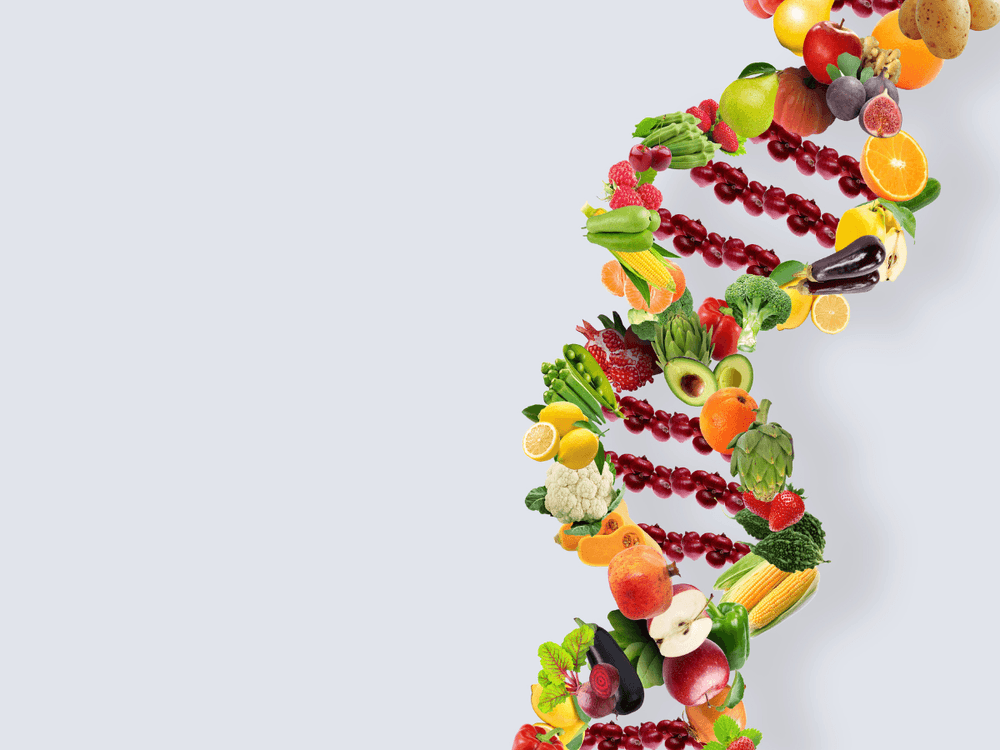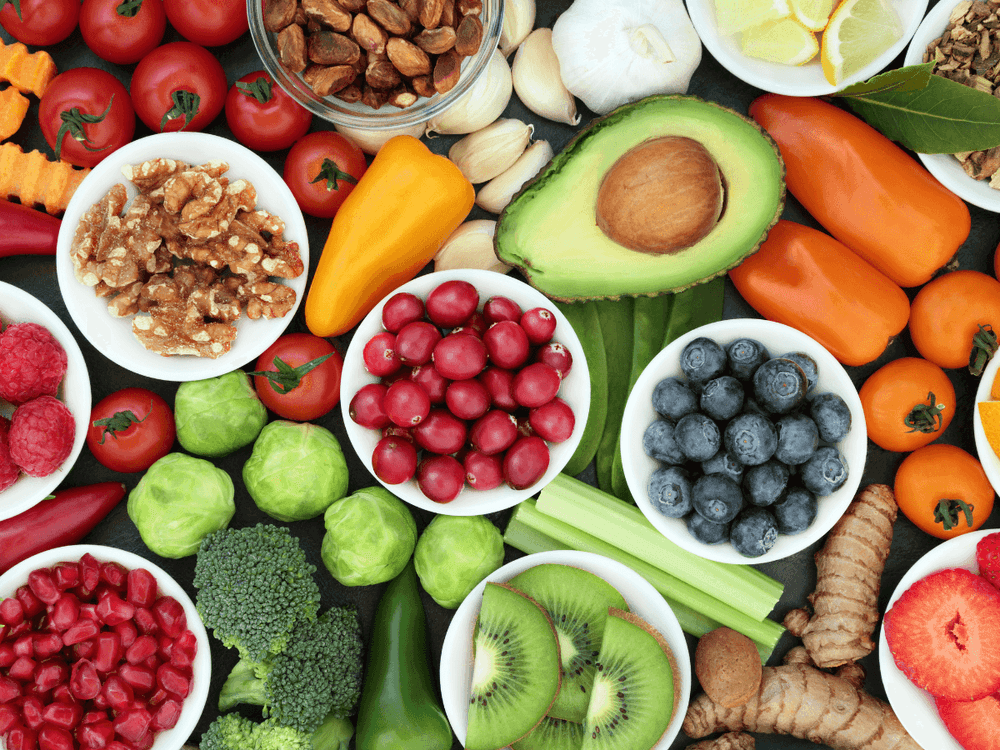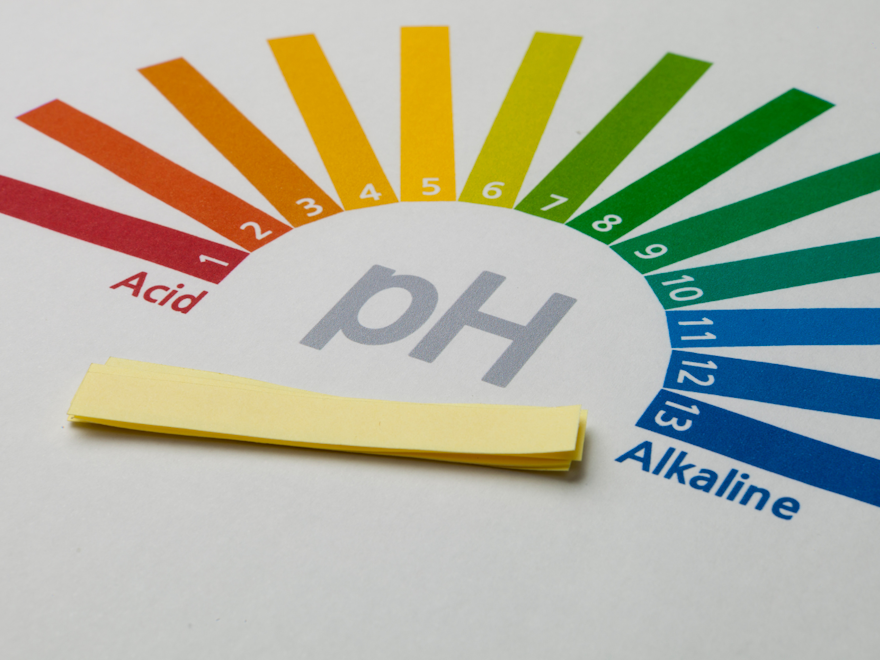L’équilibre acido-basique est de plus en plus cité comme facteur fondamental de notre santé. Reposant sur le principe d’homéostasie, l’équilibre acido-basique est naturellement favorisé par notre organisme, capable de mettre en œuvre divers mécanismes régulateurs. Cependant, cet équilibre est fragile et nos habitudes alimentaires favorisent un déséquilibre, conduisant à une acidification globale de notre corps et l’apparition de maux liés.
Dans cet article, nous explorons ce qui se cache derrière l’équilibre acido-basique, les causes et conséquences d’une acidification de notre organisme, ainsi que des solutions pour le rétablir, notamment via des actifs naturels.
Qu’est-ce que l’équilibre acido-basique de l’organisme ?
La notion de pH
Le pH (potentiel hydrogène) est une donnée chimique qui permet de quantifier le degré d’acidité d’un fluide. Le pH est compris entre 0 (milieu très acide) et 14 (milieu très basique ou alcalin), avec pour valeur neutre 7 : au-dessous de 7, le milieu est dit acide, et au-dessus de 7, il est dit basique.
Il est possible de faire varier le pH d’une solution en y ajoutant des éléments acidifiants ou alcalinisants. D’un point de vue chimique, les variations de pH sont induites par des transferts d’électrons entre les éléments d’un milieu.
Le pH de l’organisme et son équilibre acido-basique
L’équilibre acido-basique est un élément vital pour notre corps. C’est le sang qui en est le principal garant avec une valeur qui doit rester rigoureusement comprise entre 7,38 et 7,42. Pour maintenir son pH sanguin, notre organisme dispose de plusieurs moyens mettant en œuvre des échanges d’électrons dans les milieux.
L’enjeu principal de notre organisme est de réduire son acidité, favorisée par nos modes de vie et notre alimentation. Pour cela, différents éléments de notre organisme entrent en jeu comme l’hémoglobine, les ions phosphates présents dans notre corps, ou encore les bicarbonates.
Certains de nos organes sont également impliqués comme nos poumons et nos reins. Nos poumons favorisent l’élimination des acides dits « volatils » par notre respiration, tandis que nos reins traitent les acides non volatils via les bicarbonates, et en rejetant de l’ammoniac dans nos urines.
Excès d’acidité : l’alimentation principale responsable
L’alimentation occidentale se révèle trop acidifiante pour notre organisme. Les études scientifiques ont démontré qu’une alimentation riche en sel et aliments salés comme le fromage et la charcuterie, et en aliments transformés, est à l’origine d’une acidité excessive. En cause, le chlorure de sodium largement identifié comme acidifiant pour notre organisme. D’autres aliments comme les sodas, le café (en grande quantité), mais aussi les protéines animales favorisent l’excès d’acidité.
A ce contexte s’ajoute également, depuis des décennies, l’appauvrissement de notre alimentation en fruits et légumes qui possèdent naturellement des vertus alcalinisantes.
Les symptômes et les risques d’un excès d’acidité
Une acidité excessive oblige notre organisme à puiser dans diverses réserves les composés alcalinisants (calcium, magnésium, potassium) nécessaires au rétablissement de l’équilibre, induisant, à la longue, différents risques :
- En épuisant nos réserves osseuses en calcium et magnésium alcalinisants, l’acidité favorise une déminéralisation osseuse, propice à la fragilisation de notre squelette et à l’ostéoporose.
- Les sels de potassium sont également un moyen pour notre organisme de rétablir son équilibre acido-basique. La mobilisation du potassium favorise la fuite urinaire de ce dernier, mais aussi l’apparition de calculs rénaux et un dysfonctionnement du système rénal. Par ailleurs, un organisme trop acide favorise l’apparition de différentes pathologies comme le diabète, des maladies cardiovasculaires, ou encore l’obésité.

Comment rétablir l’équilibre acido-basique ?
Globalement, notre alimentation est l'un des principaux moyens dont nous disposons pour permettre au corps de maintenir son équilibre acido-basique.
Une alimentation alcalinisante
Pour un pH équilibré (le plus neutre possible), il faut donc à veiller consommer en bonnes proportions des aliments acidifiants et des aliments alcalinisants.
Les propriétés acides ou alcalines des aliments sont définies à l’aide d’un indice spécifique, l’indice PRAL (Potential Renal Acid Load). Les aliments ayant un indice PRAL négatif sont dits alcalinisants, tandis que ceux ayant un indice positif sont acidifiants. Plus la valeur absolue de l’indice est grande, plus la propriété acidifiante ou alcalinisante de l’aliment est importante.
Attention, les notions d’aliments acides, ou acidifiants, et alcalins, ou alcalinisants, n’ont aucun rapport avec le goût acide des aliments. A titre d’exemple, le citron au goût acide prononcé est pour autant l’un des aliments les plus alcalins.
Voici une liste des principaux aliments acidifiants et alcalinisants :
- Aliments acidifiants : le sel de table, les viandes, l’œuf, les poissons, les crustacés, les fromages, la charcuterie, les produits laitiers, les céréales raffinées (pâtes, riz blanc, pain blanc), les sodas, les alcools, le café, les pizzas, les chips, le sucre blanc raffiné, le miel...
- Aliments basiques (ou alcalinisants) : les fruits, les légumes, les oléagineux (noix, amandes...), les algues, le thé vert, les épices, les herbes, l’ail, l’oignon, le cacao, le sucre de canne complet, l’huile d’olive...
Les légumes verts constituent une source majeure de composés alcalinisants naturels. Lors de leur préparation, il est recommandé de les choisir de saison, et de les consommer crus, en jus, ou de privilégier une cuisson douce.
Pour les fruits, tous peuvent être consommés sous forme fraîche mais aussi séchée (dans une moindre mesure car riches en sucre). Le pamplemousse et le citron sont les plus alcalinisants, malgré leur acidité en bouche. Et il est préférable de consommer les fruits à distance des repas.
Boire est également important. Au minimum 1,5L d’eau par jour, en privilégiant des eaux riches en bicarbonates et pauvres en sodium.

Rétablir l’équilibre acido-basique par des actifs naturels alcalinisants
Les compléments alimentaires peuvent apporter des réponses complémentaires naturelles en soutien du rééquilibrage de l’alimentation.
Des cures de magnésium et de calcium (attention toutefois à l’hypercalcémie en cas d’excès de calcium – il est préférable de consulter un médecin) contribuent à compenser les déperditions urinaires induites par les mécanismes naturellement mis en œuvre par l’organisme pour réguler l’excès d’acidité.
D’autres part, des apports en composés alcalinisants comme des citrates et du bicarbonate de potassium constituent d’autres sources d’actifs alcalins naturels.
Un mode de vie plus sain
L’activité physique est un moyen supplémentaire d’éliminer les composés acides de notre organisme, notamment via la fonction respiratoire de nos poumons. Marcher, bouger tous les jours en extérieur favorise l’activité pulmonaire.
La qualité du sommeil, ainsi qu’une bonne gestion du stress contribuent également à maintenir l’équilibre acido-basique.

L’acidification de notre organisme peut affecter en particulier l’intestin, entraînant un déséquilibre concomitant de la flore intestinale. Soutenir l’équilibre du microbiote intestinal, notamment via des cures de probiotiques, en complément du soin de l’équilibre acido-basique, peut s’avérer nécessaire et contribuer à la santé globale de l’organisme. Pour tout savoir des cures de probiotiques, retrouvez notre article dédié.

